Planning Outwintering Supplementation Strategies
How do you reduce costs without reducing performance? The average cost of rearing a replacement heifer is reported to be £1500 and before any support payments the average beef cow returns a loss of almost £180 and even a store animal loses over £105 it is reported by AHDB. Profitable beef and dairy production rely on increasing returns whilst controlling input costs, especially as the future of support payments remain uncertain in the UK.
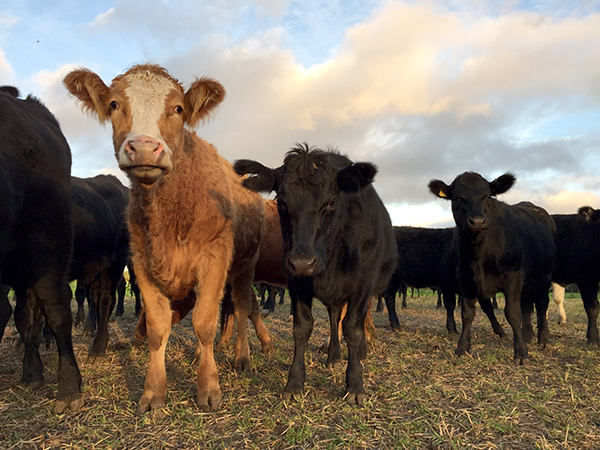
Working to improve utilisation of better value homegrown forages and reducing reliance on bought-in feed can have a significant impact on profitability. Here, Laura Drury, Rumenco Technical Adviser, discusses the advantages that out-wintering stock can bring to beef and dairy producers and the importance of ensuring appropriate management and supplementation are maintained.
CONTROLLING COSTS
With significant increases in cereal and concentrate prices this year, maximising the utilisation of better value homegrown forage is ever more important in order to control variable input costs. The graph below (figure 1) shows the costs of the most common feeds offered on farm illustrating how homegrown forages can offer significant cost savings compared to bought in cereals and concentrates.
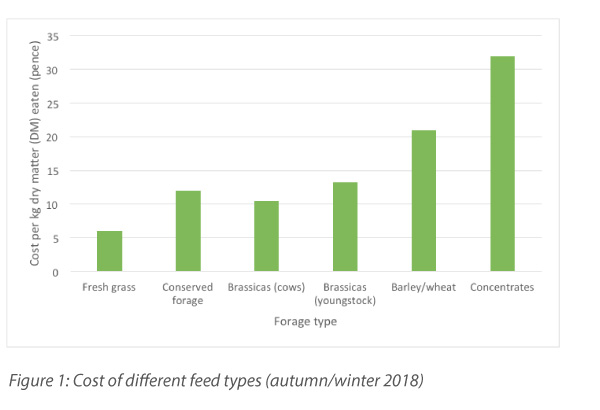
In addition to feed costs, out-wintering offers significant savings in bedding costs – one cow will require 1-2 round bales of straw for bedding over the winter housing period offering both direct savings here plus lower labour costs and machinery and fuel usage, helping to reduce fixed costs on farm.
REARING DAIRY HEIFERS
The average cost of rearing a heifer to the point of calving is estimated to cost from £1170 to £1500 with milk replacer, forage and concentrates accounting for around 85% of the variable costs. This offers considerable opportunity to reduce costs although this must be achieved without compromising lifetime performance and ensuring the target 55% of mature weight is achieved by 15 months of age.
Results from an AHDB funded project showed the effect of out-wintering heifers on subsequent milk production and health in first lactation (figure 2) and demonstrated no reduction in lactation performance or health compared to those fed a standard TMR. Most importantly, many studies have shown out-wintering can support sufficient liveweight gains but regular weighing of animals is important to identify underperformers. It is vital to have a contingency plan in place for these underperforming animals or where adverse weather conditions arise.
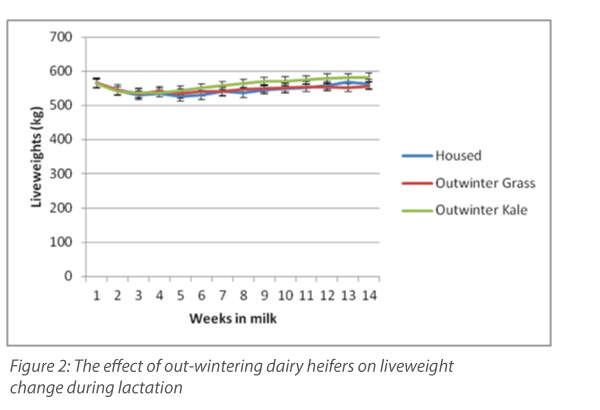
HEALTH BENEFITS
Approximately 1 in 7 dairy calves and 1 in 13 beef calves die during the rearing phase, with respiratory disease being the most common cause of death in animals up to 6 months of age. Costs associated with infection can range from £30 up to £500 per animal depending on severity of infection with potential for longer term impacts of poorer liveweight gain and reduced lung capacity and in a worst-case scenario, mortality.
Although the chances of respiratory disease, including pneumonia, won’t be completely eliminated, out-wintering removes the stress associated with housing whilst also helping to reduce the spread of disease when animals are housed.
CROP OPTIONS AND NUTRITIONAL CONSIDERATIONS
Brassicas, including kale, stubble turnips, forage rape and fodder beet can contribute up to 70% of an animal’s dry matter intake providing good levels of energy, and in leafy crops, good protein. They do however contain low levels of phosphorus, magnesium and all trace elements, especially copper, iodine and selenium, and therefore require appropriate mineral supplementation.
Rumenco’s MAXX Cattle Booster controlled intake lick provides a source of sugar (36%) to support the utilisation of the protein found in forage crops allowing it to be utilised for lean muscle development in youngstock. In addition to the good levels of selenium, iodine and copper to help counter the low levels typically found in forage crops, the high phosphorus content also helps support target growth rates in beef stores and dairy youngstock.
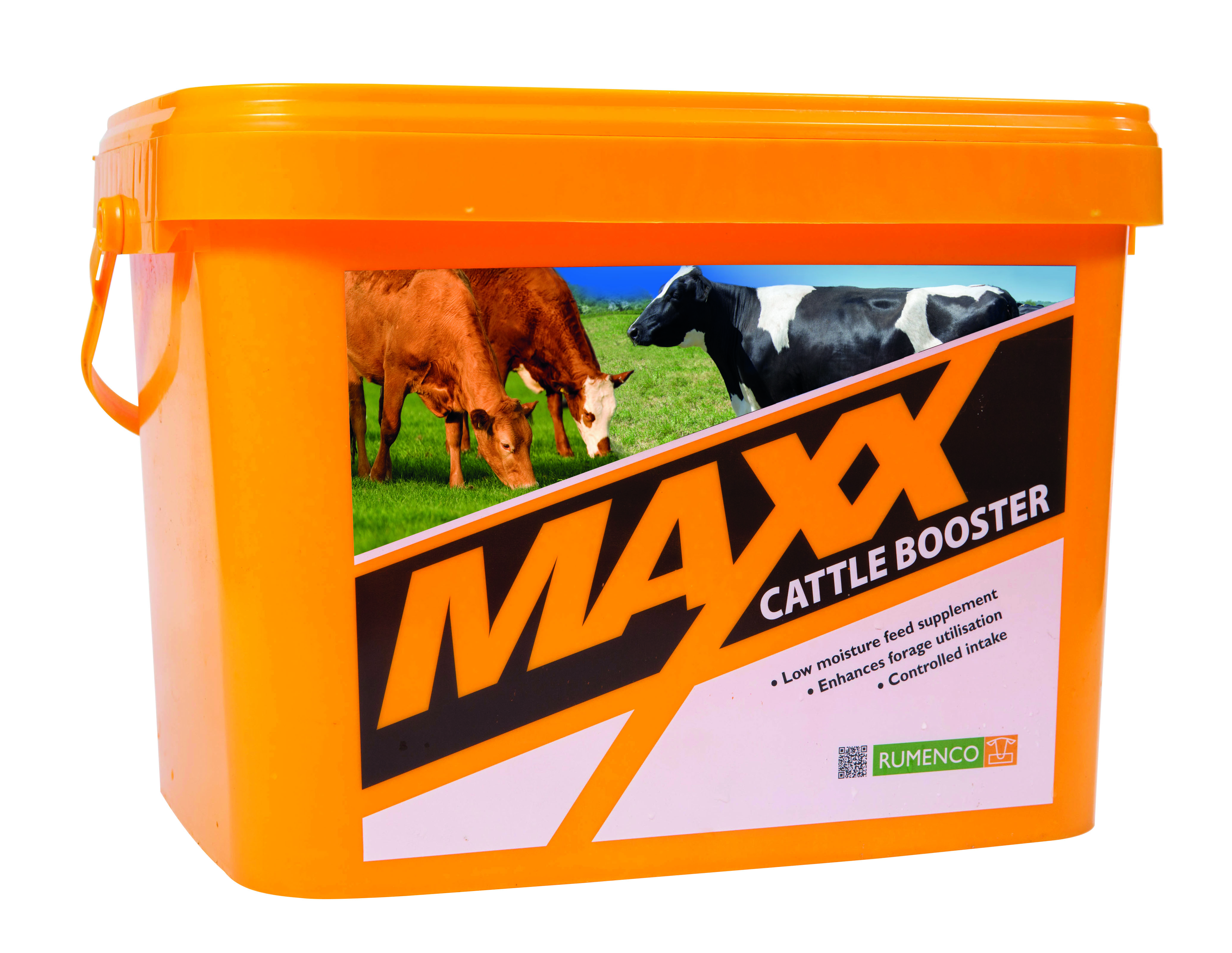
For out-wintering systems based on grass, not only will additional minerals and vitamins be required, but extra protein and energy will be necessary to help counter the unavoidable decline in nutritional and dry matter value that occurs throughout the winter (figure 3).
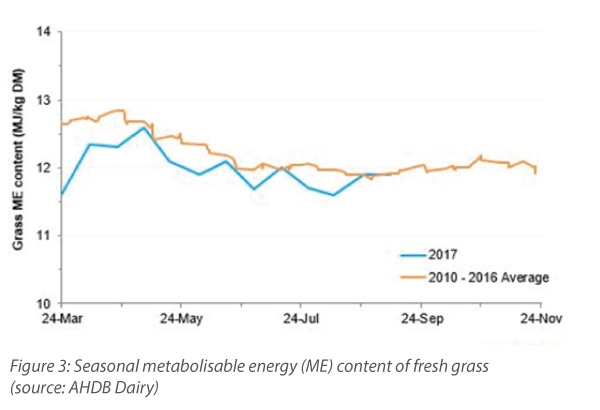
Under these circumstances, PROMAXX provides an excellent supply of protein (20%) from a mixture of natural and urea sources and good levels of energy (13MJ ME/kg DM) to help support target body condition scores and milk production in breeding cattle, plus frame development in youngstock. The little and often mechanism by which the product is consumed also offers a rumen-friendly method of supplying sugars whilst helping to increase the utilisation of protein. In addition, good levels of minerals, vitamins and trace elements are included, being critical for any forage-based system.
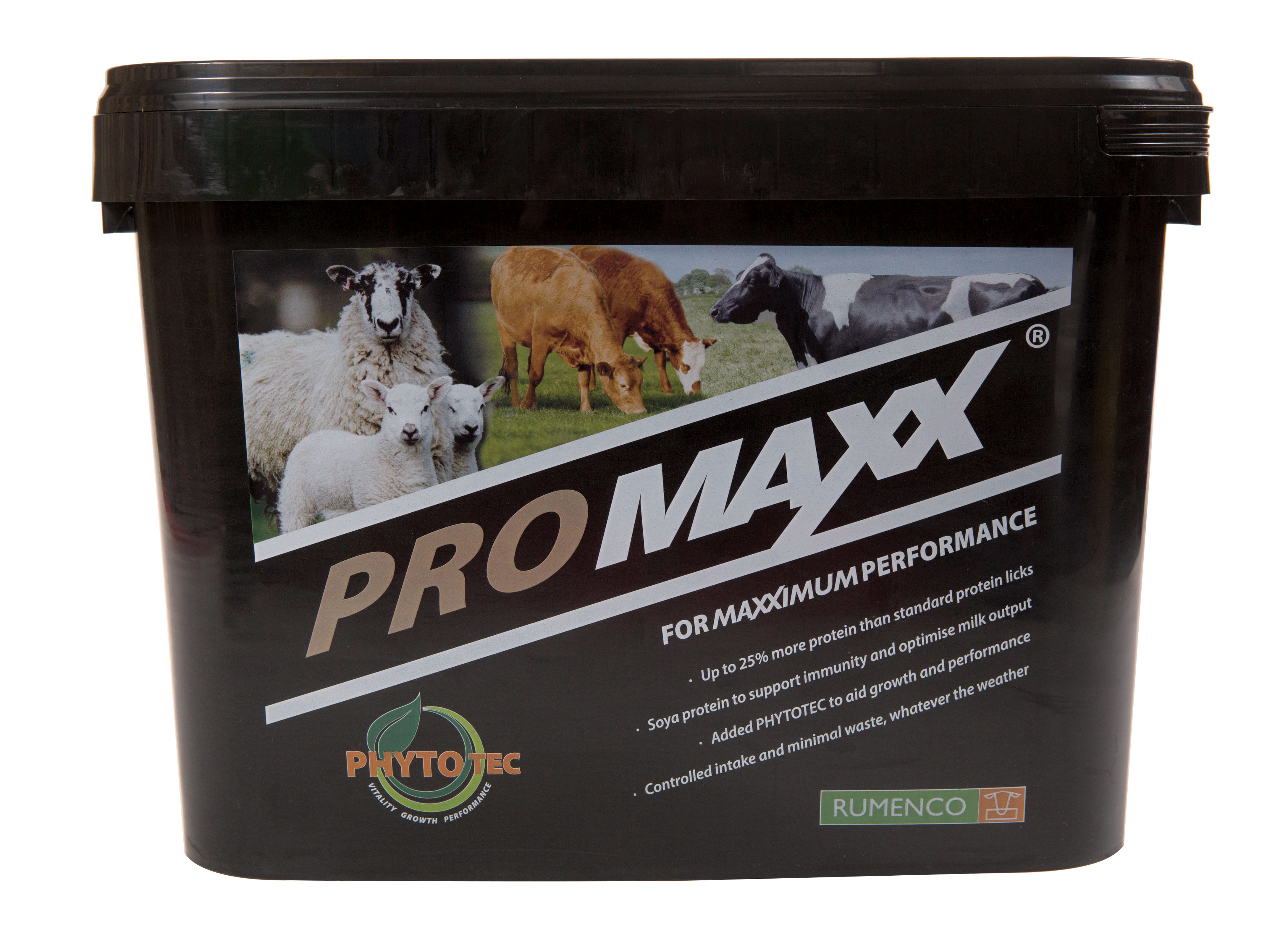
Out-wintering stock can offer producers significant savings in feed costs, bedding, labour, machinery and fuel without compromising performance. Yet appropriate supplementation with minerals, vitamins and trace elements is key to ensuring that performance is not compromised to allow producers to gain the full benefits of changing their winter-feeding strategy with the use of free-access supplements offering a proven, established method to achieve this.